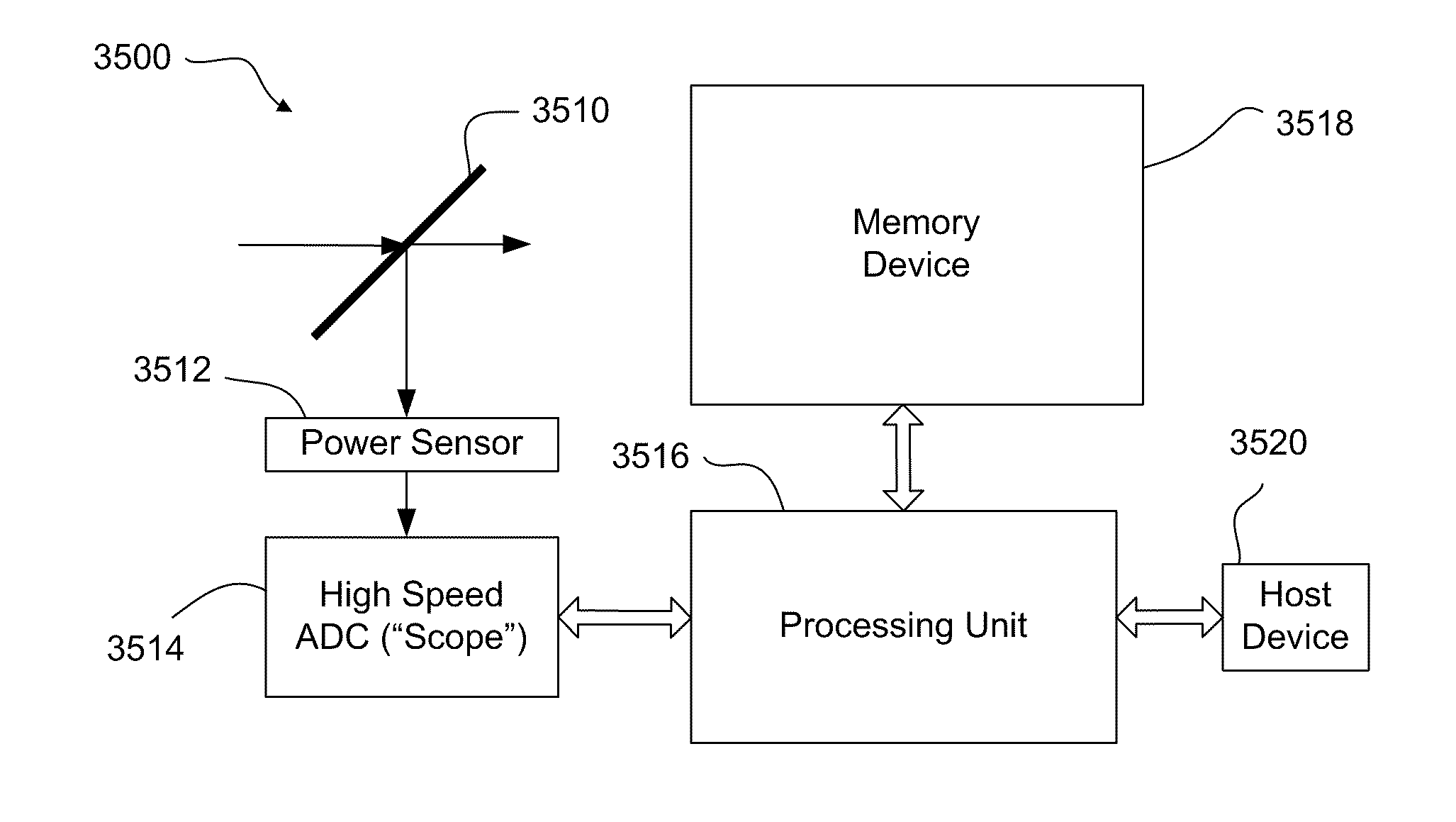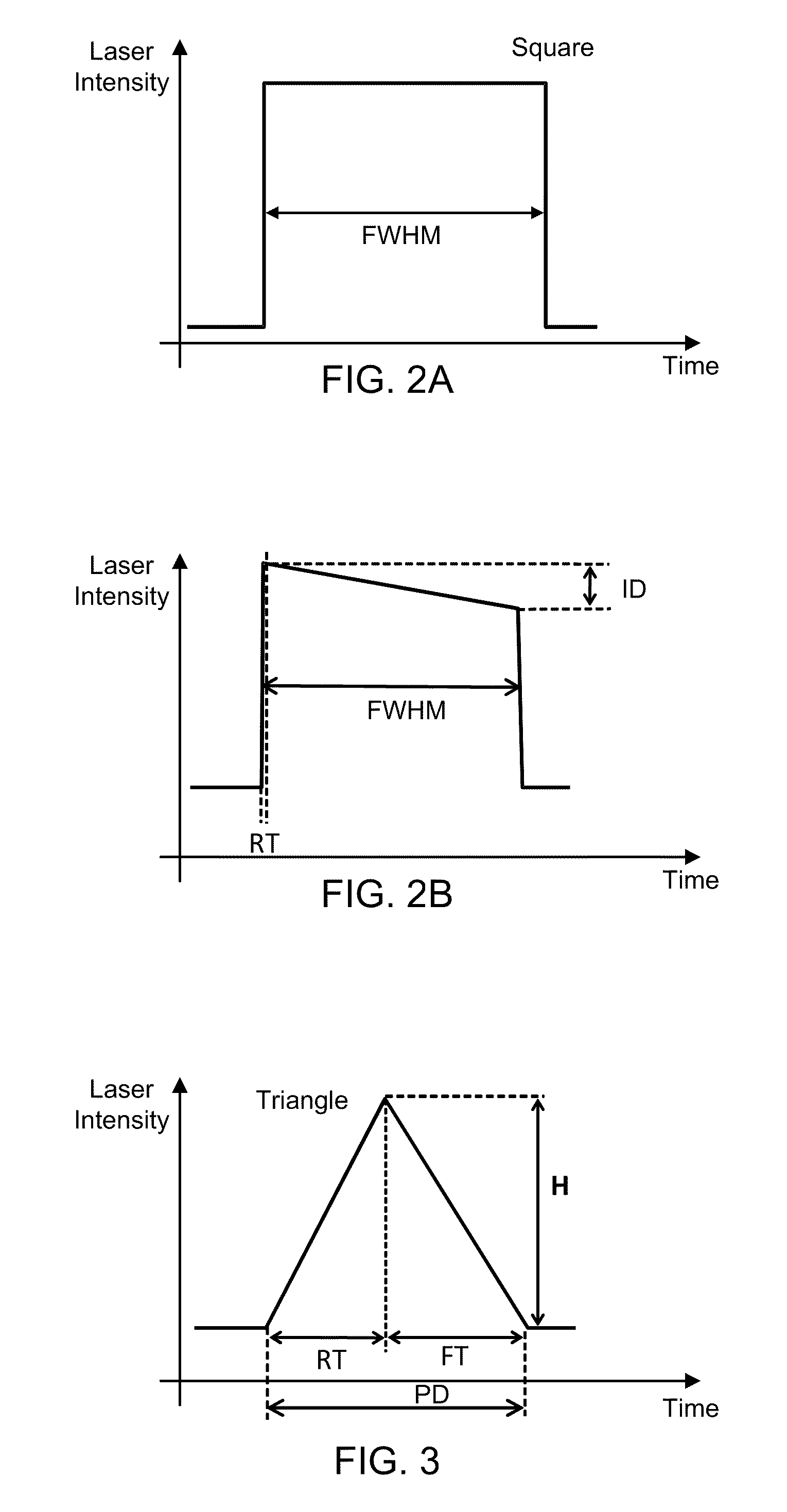Methods and systems for laser processing a workpiece using a plurality of tailored laser pulse shapes
a laser pulse and workpiece technology, applied in the direction of manufacturing tools, electrical/magnetic/electromagnetic heating, welding/soldering/cutting articles, etc., can solve the problems of slow throughput, low mechanical strength of dies compared to mechanical sawing, and high material dependence, so as to increase the strength of die breakage
- Summary
- Abstract
- Description
- Claims
- Application Information
AI Technical Summary
Benefits of technology
Problems solved by technology
Method used
Image
Examples
Embodiment Construction
[0056]Laser micromachining systems and processes described herein provide high throughput laser micromachining of workpieces with good process results, including fast and efficient removal rates of materials, no chipping or cracking or other mechanical damage to the target material, control of material splash and ejected debris, no significant reduction in the material strength due to thermal damage or micro-cracking, and a process that meets cosmetic requirements (such as a smooth edge, smooth vertical or horizontal surfaces).
[0057]The term “tailored laser pulse” (also referred to herein as a shaped “temporal pulse profile”) refers to a laser pulse with an adjusted or programmed (shaped) laser power or intensity with respect to time (laser intensity vs. time). Thus, a tailored laser pulse or a shaped temporal pulse profile should not be confused with spatial shaping of laser pulses (such as a top-hat spatial beam shape). Skilled persons will recognize from the disclosure herein, ho...
PUM
| Property | Measurement | Unit |
|---|---|---|
| repetition frequency | aaaaa | aaaaa |
| rise time | aaaaa | aaaaa |
| fall time FT | aaaaa | aaaaa |
Abstract
Description
Claims
Application Information
 Login to View More
Login to View More - R&D
- Intellectual Property
- Life Sciences
- Materials
- Tech Scout
- Unparalleled Data Quality
- Higher Quality Content
- 60% Fewer Hallucinations
Browse by: Latest US Patents, China's latest patents, Technical Efficacy Thesaurus, Application Domain, Technology Topic, Popular Technical Reports.
© 2025 PatSnap. All rights reserved.Legal|Privacy policy|Modern Slavery Act Transparency Statement|Sitemap|About US| Contact US: help@patsnap.com



